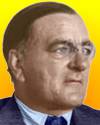
On 13 Jan 1953, Paul Nigli died, the Swiss mineralogist who originated the idea of a systematic deduction of the patterns in the internal structure of crystals by means of X-ray data. He supplied a complete outline of methods that have since been used to determine these patterns. For some more biography, read the Paul Niggli page on this web site.

On 13 Jan 1943, the first use of an ejection seat to save a pilot was made. A German test pilot required its use when his plane failed to separate from the tow aircraft due to the cable release mechanism icing up. The ejection seat, made by Heinkel, was pneumatically powered and accelerated the pilot upwards at about 8-g. He landed safely. Today's book pick is: Eject!: The Complete History of U.S. Aircraft Escape Systems, by Jim Tuttle, an aerospace engineer with 33 years experience. His chronology covers the complete history of aircraft escape systems used in the United States up to modern gyro-stabilized, vectorable rocket capsules capable of deployment at Mach 3 and at the edge of space. The detailed descriptions of the technologies behind each ejection systems development and use are accompanied by photographs, diagrams, and fascinating firsthand accounts from pilots and crewmembers who have used escape systems.
It is available from Amazon, typically about New from $44.24. Used from $7.08. (As of earlier time of writing - subject to change.)
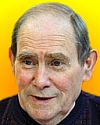 | Have you tried neuroxing papers? It.'s a very easy and cheap process. You hold the page in front of your eyes and you let it go through there into the brain. It’s much better than xeroxing. |
| no image | Everywhere science is enriched by unscientific methods and unscientific results, ... the separation of science and non-science is not only artificial but also detrimental to the advancement of knowledge. If we want to understand nature, if we want to master our physical surroundings, then we must use all ideas, all methods, and not just a small selection of them. |
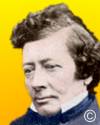 | The entire annals of Observation probably do not elsewhere exhibit so extraordinary a verification of any theoretical conjecture adventured on by the human spirit! [On the mathematical work by Urbain Le Verrier predicting the planet Neptune.] |
| Before you look at today's web page, see if you can answer some of these questions about the events that happened on this day. Some of the names are very familiar. Others will likely stump you. Tickle your curiosity with these questions, then check your answers on today's web page. | |
| Births | |
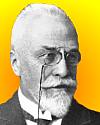 | Oskar Minkowski, born 13 Jan 1858, was a German physiologist and pathologist who uncovered the role of a certain body organ in diabetes. In an experiment with Joseph von Mering, they removed this organ from a dog, it consequently developed diabetes. Which body organ did they identify? |
 | On 13 Jan 1927, Sydney Brenner was born, who shared the 2002 Nobel Prize in Physiology or Medicine for discoveries concerning how the genes regulate organ development and programmed cell death (apoptosis). Because of its simple structure, he established Caenorhabditis elegans as a model organism for the investigation of animal development including neural development. What type of organism is Caenorhabditis elegans? |
| Deaths | |
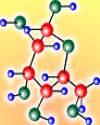 | Henri Braconnot (1781-1855) was a French chemist known for isolating glucose, a simple sugar, directly from certain plant materials by boiling them with acid (1819). Previously, glucose had only been derived from starch. Can you give examples of the forms of plant material that yielded this glucose? |
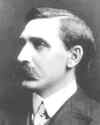 | Sebastian Ziani de Ferranti (1864-1930) was an electrical engineer who promoted the installation of large electrical generating stations and alternating current distribution networks. In his 20s, he began planning an ambitious generating station, to use transmission at an unprecedented 10,000 volts—four times greater than previously practical. In which country did he contribute to the development of the electrical industry? |
| Events | |
 | On 13 Jan of a certain year, the first machine for reading printed matter aloud was given its first public demonstration. Using a camera with a computer, pages of printed matter could be scanned, the letters analysed, and reproduced in synthesized English speech at 150 words per minute. In what decade was this machine first demonstrated? |
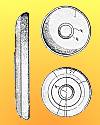 | On 13 Jan 1957, the first frisbee was developed when by the Wham-O Company; a representative of the company got the idea for the product when he saw some truck drivers showing Yale students how to throw something similar. From the flight of what object was the frisbee developed? |
Fast answers for the previous newsletter for January 12: wash-and-wear fabrics • carbon dioxide • In an + bn = cn, the new equation cannot be solved in integers for any value of n greater than 2. • Stourbridge Lion • Thomas Edison • Eiffel Tower.
 If you enjoy this newsletter, the website, or wish to offer encouragement or ideas, please send feedback by using your mail reader Reply button.
If you enjoy this newsletter, the website, or wish to offer encouragement or ideas, please send feedback by using your mail reader Reply button. Your click on a Facebook, StumbleUpon, or other social button on the site webpages is also a welcome sign of appreciation. Thank you for using them.
© This newsletter is copyright 2020 by todayinsci.com. Please respect the Webmaster's wishes and do not put copies online of the Newsletter — or any Today in Science History webpage. (If you already have done so, please remove them. Thank you.) Offline use in education is encouraged such as a printout on a bulletin board, or projected for classroom viewing. Online, descriptive links to our pages are welcomed, as these will provide a reader with the most recent revisions, additions and/or corrections of a webpage. For any other copyright questions, please contact the Webmaster by using your mail reader Reply button.
--
If you do not want to receive any more newsletters, Unsubscribe
To update your preferences and to unsubscribe visit this link
Executive Real Estate Business Class
-
"It was like a man with wings. It wasn't like anything you'd see on TV or in a monster movie." ...
About the publisher
Search This Blog
Blog Archive
-
▼
2021
(585)
-
▼
January
(109)
- Ian Kershaw on why Hitler declared war on America
- On This Day for January 31 - Guy Fawkes executed i...
- Newsletter for Sunday 31 January.
- January 31: Slavery Abolished in the USA, Guy Fawk...
- On This Day for January 30 - “Great Soul” assassin...
- Newsletter for Saturday 30 January.
- January 30: Oliver Cromwell Ritually Executed, Mah...
- On This Day for January 29 - Iraq, Iran, and North...
- Newsletter for Friday 29 January.
- January 29: Romeo and Juliet, Coca-Cola and the Se...
- 'The Food That Built America' Is Back!
- On This Day for January 28 - Explosion of the spac...
- Newsletter for Thursday 28 January.
- Inside The Still-Mysterious Circumstances Of Heath...
- Demystified: What’s the Difference Between a Presi...
- On This Day for January 27 - Vietnam War ended, Wo...
- Newsletter for Wednesday 27 January.
- January 27: Kaiser Bill is Born, the Siege of Leni...
- You are now unsubscribed
- What The Wild West Actually Looked Like in 48 Reve...
- New Savings! $50 off Family Memberships
- On This Day for January 26 - First European settle...
- Newsletter for Tuesday 26 January.
- January 26: Catholic Counter-Reformation, British ...
- On This Day for January 25 - Claudius affirmed as ...
- Newsletter for Monday 25 January.
- January 25: São Paulo Founded, Charles Wilkes Disc...
- Queen Victoria and Prince Albert's marriage | Wors...
- On This Day for January 24 - Opportunity's Mars la...
- Newsletter for Sunday 24 January.
- January 24: Scouting for Boys, Apple's Macintosh a...
- On This Day for January 23 - Madeleine Albright sw...
- See All That's Interesting Most Popular Articles
- Please Confirm Subscription To Our Newsletter
- The "Alaskan Avenger" Who Attacked Sex Offenders W...
- On This Day for January 22 - Roe v. Wade ruling, L...
- Newsletter for Friday 22 January.
- On This Day for January 21 - First commercial Conc...
- Newsletter for Thursday 21 January.
- Need Context with Your News?
- Demystified: Where Do Honeybees Go in the Winter?
- On This Day for January 20 - Barack Obama sworn in...
- Newsletter for Wednesday 20 January.
- On This Day for January 19 - Rule in India transfe...
- Newsletter for Tuesday 19 January.
- On This Day for January 18 - German Empire establi...
- Newsletter for Monday 18 January.
- January 18: King of Siam Kills the Crown Prince of...
- Queen Victoria and Prince Albert: was their union ...
- On This Day for January 17 - Hawaiian monarchy ove...
- Newsletter for Sunday 17 January.
- January 17: US-Modoc War, the UN Security Council ...
- On This Day for January 16 - Beginning of Persian ...
- Newsletter for Saturday 16 January.
- January 16: Ivan the Terrible, Louis XVI's Death S...
- The Tragedy Of David Reimer, The Boy Forced To Liv...
- On This Day for January 15 - British Museum opened...
- Newsletter for Friday 15 January.
- January 15: Henry VIII and the Church of England, ...
- On This Day for January 14 - Premiere of Giacomo P...
- Newsletter for Thursday 14 January.
- January 14: The Dutch Conquer Malacca, the US Revo...
- Demystified: Why Does Water Freeze from the Top Down?
- On This Day for January 13 - Émile Zola's “J'accus...
- Newsletter for Wednesday 13 January.
- January 13: 1st Issue of "The Times" of London, Ch...
- On This Day for January 12 - Haiti severely damage...
- Newsletter for Tuesday 12 January.
- January 12: A Day of Coronation, Gandhi's Last Fas...
- On This Day for January 11 - Amelia Earhart's Hawa...
- Newsletter for Monday 11 January.
- January 11: Spices, Morse Code, Insulin and 55 Yea...
- The real history behind Bridgerton
- On This Day for January 10 - Common Sense publishe...
- Newsletter for Sunday 10 January.
- January 10: Thomas Paine Publishes Common Sense, T...
- On This Day for January 9 - Election of Mahmoud Ab...
- THE IGBO LANDING - HOW THEY COMMITTED SUICIDE
- Newsletter for Saturday 9 January.
- January 9: Joan of Arc's Trial, the Daguerreotype ...
- The Biggest Historical Discoveries From 2020 And M...
- On This Day for January 8 - Anniversary of Grimald...
- Newsletter for Friday 8 January.
- January 8: US National Debt Briefly Hits $0, Forma...
- On This Day for January 7 - Galileo's discovery of...
- Newsletter for Thursday 7 January.
- January 7: A Day of Invention - The Typewriter, Hy...
- On This Day for January 6 - Epiphany, Richard II i...
- Newsletter for Wednesday 6 January.
- January 6: Charles I put on Trial for Treason, FDR...
- Meet The Real-Life Goodfellas Whose True Stories W...
- On This Day for January 5 - Golden Gate Bridge con...
- Newsletter for Tuesday 5 January.
- January 5: Richmond Burns, The Nazi Party Forms, A...
- Last Call for 30% off Memberships
- On This Day for January 4 - Burma granted independ...
- Newsletter for Monday 4 January.
- January 4: The Colt Revolver, a 33 Year Strike and...
- Dangers of Victorian London| Roman history quiz | ...
- On This Day for January 3 - Martin Luther excommun...
-
▼
January
(109)
-
Blogroll
-
About
HistoryFact










0 comments:
Post a Comment